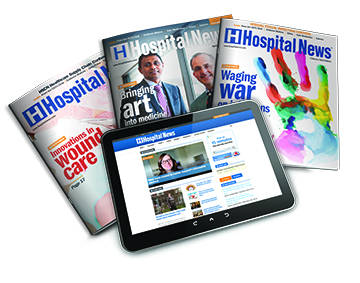By Grant Fuller and Certina Ho
Every patient has the right to be informed when an incident associated with medication therapy has occurred. Healthcare practitioners need to understand when disclosure is appropriate or necessary and how to properly disclose medication incidents.
In this article, we will suggest a framework for the disclosure of medication incidents. This framework is adapted from the Canadian Patient Safety Institute (CPSI) “Canadian Disclosure Guidelines” and a previously published continuing education lesson for pharmacy technicians on “How to Handle a Medication Error”. We also consulted the Canadian Medical Protective Association (CMPA) article, “Disclosing harm from healthcare delivery: Open and honest communication with patients”. We would like to refer readers to these original resources for further information.
A suggested approach to disclose medication incidents
Immediate Actions
After a medication incident is discovered, there are immediate actions that must be taken before the disclosure:
- Attend to the affected patient(s); ensure their care needs are met.
- Take immediate measures to prevent similar safety risks from harming other patients or staff.
Is Disclosure of the Medication Incident Needed?
After any immediate safety concerns are addressed, practitioners must decide whether disclosing the medication incident to the patient is appropriate or necessary (Figure 1).
- Consider the degree of harm the patient experienced or could have reasonably experienced as a result of the incident (Figure 1)
- “Harm” refers to incidents that reached the patient and resulted in temporary or permanent impairment (including mental, physical, sensory functions and pain) in body functions or structures
- “No Harm” refers to incidents that reached the patient but resulted in no injury
- “Near Miss” refers to events that could have resulted in patient harm but did not reach the patient
- When in doubt, consider whether a patient would reasonably want to know about the incident.
Reference: Canadian Patient Safety Institute Canadian disclosure guidelines: being open and honest with patients and families; November 2011.
Apologies
Apologies are crucial to the disclosure process; they make patients feel validated and respected. Legislation exists in several provinces, including Ontario, to protect healthcare practitioners from legal liability associated with apologizing. When offering an apology:
- Communicate genuine sincerity about the medication incident.
- Use a personal tone, including terms, such as, “I” or “We.”
- Use appropriate non-verbal gestures (e.g. body language, tone of voice, facial expressions).
- Assure that harm did not result from anything the patient or family did or did not do.
Preparing the disclosure
When a disclosure is necessary, prepare for the initial meeting:
- Schedule an in-person meeting at the earliest practical opportunity. Select a time that is convenient for the patient and family and a place that is private and free of interruptions. Allow adequate time for discussion of the incident.
- The most responsible healthcare provider who is involved should facilitate the disclosure. All others who played a role in the incident should be prepared to discuss relevant events with the patient and family.
- Anticipate emotions; both the patient and practitioners should have supports available at the disclosure meeting if needed.
- Assign a staff member as the primary contact for the patient and family throughout the disclosure process.
Disclosure
The initial disclosure provides an opportunity for the patient and family to understand what the medication incident was, why and how it might have happened.
- Focus on the events that led to the incident. Use clear and understandable terminology. Avoid speculation and assigning blame.
- Encourage the patient and family to discuss the incident from their point of view.
- Discuss any changes to the ongoing care of the patient in consultation with the patient’s primary healthcare provider.
- Document the discussion. Allow the patient and family to review the documentation to ensure everyone agrees on the facts.
Continued feedback
Disclosure requires continued dialogue with the patient and family rather than a single discussion. After the initial disclosure meeting and when the medication incident has been fully reviewed and analyzed:
- Communicate new findings about the incident to the patient and family members.
- Reinforce, update, or correct information provided in previous meetings.
- Discuss any improvements or changes made in practice in order to prevent similar events from occurring.
- Provide continued practical and emotional support to the patient and family.
After a medication incident occurs, the course from reporting and disclosure to the eventual implementation of system-based improvements can be complicated. Having a structured approach and the knowledge to appropriately disclose medication incidents are important; however, they represent just one step in addressing the challenges of medication incident reporting and learning. Improving how we deal with medication incidents will require an ongoing engagement and support from organizations, teams, and individual practitioners.
The information in this article is adapted from a recently published article on “Disclosure of Medication Incidents: A Suggested Framework” in the Summer 2019 edition of the Ontario College of Pharmacists (OCP) Pharmacy Connection journal.
Grant Fuller is a PharmD Candidate at the School of Pharmacy, University of Waterloo. He completed a co-op placement at the Institute for Safe Medication Practices Canada (ISMP Canada) as a Medication Safety Analyst; and Certina Ho is a Project Lead at ISMP Canada.




